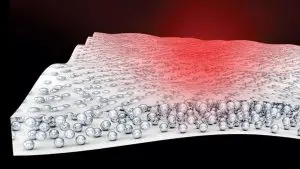Electronics Cooling invites you to share your expertise, knowledge, and perspective on critical aspects, foundational education, and trends with electronics thermal management technology. Electronics Cooling stands strong as one of the foremost resources for thermal management engineers and professionals, and much of this success is the result of a dedicated community of … [Read more...]
Rising Demand for Thermal Management in Consumer Electronics Prime Factor for Exponential Growth of Market
According to the new market research report "Thermal Management Market by Material Type (Adhesive, Non-Adhesive), Devices (Conduction, Convection, Advanced, Hybrid), Service (Installation & Calibration, Optimization & Post Sales), End-Use Application - Global Forecast to 2022", The thermal management market is expected to be worth USD 14.24 Billion by 2022, growing at a … [Read more...]
New Line of Dielectric Coolants Launched
Engineered Fluids announces the commercial release of its CoolFluids line of high performance dielectric cooling fluids. Designed specifically for single phase, direct immersion cooling of electrical devices, CoolFluids are biodegradable, non-toxic, synthetic dielectric coolants with more than 1800x the cooling capacity of air. In addition, CoolFluids have an extremely … [Read more...]
Low Cost Plastic Films Lower Exposed Surface Temperatures by 10°C
Low-emissivity (Low-E) films are not new –they represent a mature technology in which a metal-oxide coated surface emits low levels of radiant thermal energy. Low-E films are widely used on window glasses in energy-efficient buildings. Low-E materials include metals like Aluminum foil which has a thermal emissivity /absorptance of 0.03 which means that it reflects 97 percent of … [Read more...]
Liquid Silicone Rubber (LSR) Widely Available
Liquid Silicone Rubber, with its low compression set, fast cure cycles, great stability and ability to resist extreme temperatures of heat and cold makes it ideally suitable for the production of parts where high quality is a must. Unlike most thermoplastic elastomers (TPRs and TPEs), LSR remains flexible and elastic down to -70o F and retains its properties up to 450o F. In … [Read more...]
- « Previous Page
- 1
- …
- 6
- 7
- 8
- 9
- 10
- …
- 13
- Next Page »








